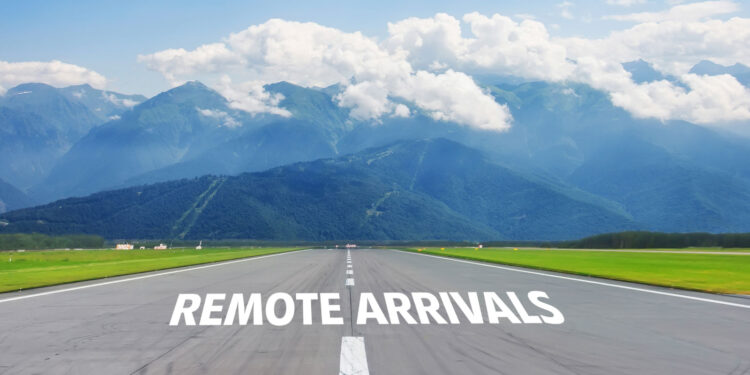Ground Operations at Remote General Aviation Destinations – Part 2: Services and Credit

This business aviation blog post continues from our article last week, titled “Ground Operations at Remote General Aviation Destinations – Part 1: Airport Considerations.”
When operating your business aircraft to a remote location, there will likely be cases where you will be handled by agents unfamiliar with the specific needs of general aviation (GA). Often service standards can be minimal, or at least of a lower standard than you’re accustomed to, due to their unfamiliarity of GA equipment.
The following is an overview of what you need to know:
1. Airport and ground support equipment (GSE) availability
You’ll want to confirm if the airport has a tower, airport lighting, ILS or other precision nav aids as well as adequate fire/rescue capability. It’s also important to consider availability of required GSE at remote locations. In some cases you may need to have certain equipment, such as a ground power unit (GPU) or airstairs, repositioned to the airport. This requires advance notice, and additional costs are involved.
2. Airport security
Be aware of all security measures and issues at proposed destination airports, well prior to operation. There will be cases where the airport is not properly fenced and may lack security patrols, CCTV surveillance, etc. Tamper tape is always good to have to ensure no one has accessed a door or hatch while you’re away from the aircraft. In many cases you’ll want to arrange dedicated security for your aircraft. It’s important to know if this is permitted, at the particular airport, and under what circumstances. In some cases you’ll be allowed to have private armed or unarmed guards at your aircraft. In other cases you’ll only be permitted to utilize licensed on-airport personnel for these purposes.
3. Hotel and local transport options
For overnight stops be aware of all local hotel options – including star ratings, available services, restaurant options, security risks and transport options to/from the airport. At some remote locations choices will be particularly limited, possibly to only one-star hotels, and you’ll need to pre-advise passengers of these limitations. Even for tech stops it’s best to be aware of local hotel options, just in case you need to stay longer. Local private transport options may also be very limited at remote locations. Rental vehicles, for example, may not be available at certain locations or may have to be brought in.
4. In-flight catering options
If in-flight caterers are available on the field, at remote or secondary airport locations, they may only be familiar with basic airline style catering. You’ll need to consider nearby catering sources—such as local restaurants and hotels—as well as payment and delivery options to the aircraft. In some cases it’s best to bring catering with you for the outbound leg, or to reposition after takeoff to uplift catering, fuel, and other services needed at a larger and more full-service location.
5. CIQ considerations
As most remote and secondary domestic airports around the world do not have fixed-base operators (FBOs) or general aviation terminals (GAT), you’ll usually clear customs, immigration, and quarantine (CIQ) within the main terminal, when available. In some cases you’ll clear in the same lines as scheduled commercial passengers. Local handlers, however, are often able to organize a dedicated clearance lane, with advance notice. It’s always recommended to research CIQ clearance procedures in advance of the aircraft’s arrival to determine needed arrangements and to be able to brief your passengers in advance.
6. Credit is always a consideration
Know, prior to day of operation, what credit and payment options are available regarding fuel uplifts, ground handling, and 4th-party services. At some locations aviation fuel cards and credit cards may not be accepted. Wire transfers may be required, and in rare cases, cash payments could be necessary. If you’re paying cash be aware that only local currency is accepted at some locations. So, you may need to find a bank to exchange currency. To ensure local payment arrangements, a minimum of one week lead time is suggested. This should allow sufficient time to send payment to the location and to give the handler’s local bank time to process the payment.
7. Iron out potential credit issues
Often your trip support provider will be able to work with a GA-experienced ground handler at a major airport within the country to arrange payment options at your remote destination. If credit and payment issues are not sorted out in advance this could cause your aircraft to be held up on departure—resulting in delays that may impact passenger schedules, crew duty time, etc.
8. Compliance is an important consideration with any foreign payment
It’s always important that local payments are done via proper channels, that adequate receipts are obtained, and to ensure compliance with regulations such as the Foreign Corrupt Practices Act (FCPA) and UK Bribery Act 2010. It’s also important to know who you’re paying and for what specified services. Having you ground handler or trip support provider handle these payments, and collection of compliant receipts, helps operators maintain compliance for their operations.
9. Additional Reading: Services at Remote Locations – Series Index
Note: Links will be updated as articles are published.
- Part 1 – airport considerations
- Part 2 – services and credit
- Part 3 – special considerations
Conclusion
It’s always important to work closely with your trip support provider and local ground handler in order to ensure adequate and no-delay services at remote destinations. Whenever possible, avoid traveling with large amounts of cash. Despite assorted credit challenges at many airport locations your handler and trip support provider will find ways to arrange local credit, given sufficient advance notice.
Questions?
If you have any questions about this article or would like assistance planning your next trip to remote locations, contact me at greglinton@univ-wea.com.
Stay tuned for Part 3, which covers information on special considerations for ground handling at remote locations.



